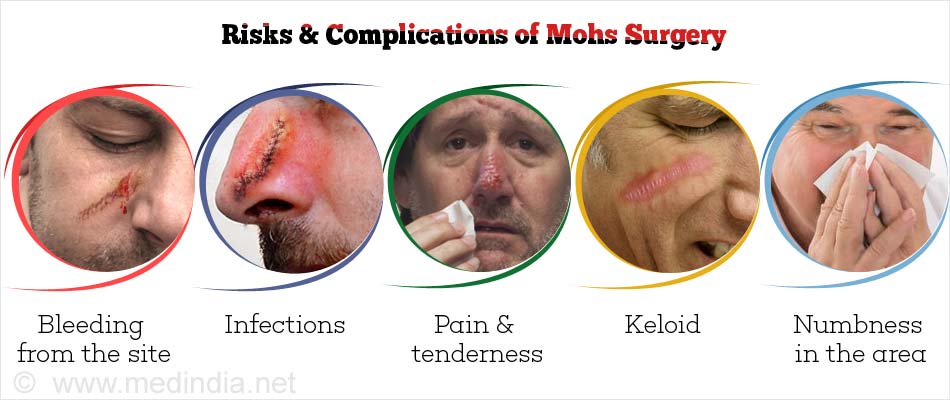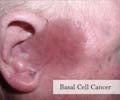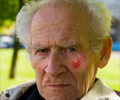What is Mohs Surgery?
Mohs is a microscopically controlled surgical technique used in the treatment of common skin cancers.
Dr. Frederic E. Mohs developed the Mohs surgery for skin cancer.
Mohs surgery is also referred as Mohs micrographic surgery.
In conventional surgery, the tumor is excised en-masse with a safe margin of surrounding normal tissue, and the tumor sent for microscopic analysis and the results awaited.
In contrast, Mohs surgery is performed by removing the tissue in multiple steps performed on the same day, being guided at each step by microscopic analysis of the tissue to decide whether further surgery to remove more tissue is necessary on the same day itself. Here the microscopic analysis is done immediately rather than waiting for the results a few days later.
Mohs surgery allows the removal of the cancerous cells in layers with one layer at a time. The tissue is examined under a microscope before the removal of the successive deeper layers. The layers are excised until the cancer-free tissue appears. Unlike the standard surgical excision where the tumor along with a small margin of normal tissue is removed, Mohs surgery allows a precise surgical removal of cancerous growth by sparing healthy tissue; it decreases the need for an additional treatment at a later date and increases the chances of cure.
Why is it Done?
Mohs surgery is a procedure which is performed under high set standards and competency. It has the best cure rate among the skin cancer treatment procedures.
Mohs surgery is performed in patients with
- Basal cell carcinoma: A form of the skin cancer with low malignant potential
- Squamous cell carcinoma: A form of skin cancer which originates from the squamous cells of the skin
- Melanoma and Melanoma in situ: Melanoma is a skin cancer which originates from the melanin producing cells. Melanoma in situ is confined to epidermis
- Paget’s disease of the breast: Skin cancer which involves the nipple of the breast.
- Merkel cell carcinoma: It is an aggressive skin cancer which is rare. It is caused by Merkel cell polyomavirus in about 80%.
- Sebaceous carcinoma: Skin cancer which arises from the sebaceous glands.
- Dermatofibrosarcoma protuberans: It is a rare neoplasm which involves the deeper layer or dermis of the skin.
- Keratoacanthoma: It is a skin tumor which is low grade and it arises from the hair follicle.
- Spindle cell carcinoma: A type of skin cancer which contains long spindle-shaped cells
- Microcystic adnexal carcinoma: It is sclerosing sweat gland carcinoma
- Atypical fibroxanthoma: It is low-grade skin malignancy

Mohs surgery is preferred in the following situations:
- Tumors that have a high chance of recurrence
- Recurrent tumor
- Large and aggressive tumors
- Tumors with ill-defined borders
- Tumors in locations where the healthy tissue needs to be preferred like face, hands, feet, genitals and hairline
What are the Preparations Done Before Mohs Surgery?
Following a thorough history and physical examination and tests, the surgeon may decide that Mohs surgery is the ideal option for the patient. The following ways are recommended by the surgeons before Mohs surgery.
- The doctor will ask you about your regular medications. He may ask you to stop taking a few medications like blood thinners before surgery. You should let the doctor know of all your medications including supplements.
- Routine blood and urine tests need to be done to evaluate the health of the patient and to rule out any underlying conditions that have to be addressed before the surgery.
- The procedure usually takes about 4 hours but sometimes it may require more time, so reserve the whole day for surgery.
- Stop smoking.
- The nurse or the doctor may ask you to stop eating and drinking before surgery for. at least 8-10 hours.
- The procedure is usually performed on outpatient basis.
- It is performed in the operation theater or a procedure room.
- It is mostly performed under local anesthesia.
- The surgeon or nurse will clean the area where surgery is required, then outlines the area with a special marker, then injects the local anesthetic.
What Happens during Mohs Surgery?
- The patient may be administered a sedative intravenously to calm the nerves. The anesthetist then marks the area of operation with a marker and infiltrates the skin over the site with local anesthetic.
- Once the local anesthetic agent works, it numbs the required area. You will be awake during the procedure.
- The surgeon gives an incision and removes the tumor along with a thin layer of the surrounding tissue. Then he will close the incision temporarily.
- The surgeon color codes the tissue being sent for microscopic analysis to know where exactly it was removed from in the body.
- You will have to wait for a while, during which the technician prepares frozen sections to enable faster diagnosis and makes slides of the tissue.
- The surgeon examines the slides and if he finds cancer cells in the outer margins or edges, he will remove one more layer in the affected portion. He will examine the tissue layer. This process goes on until no cancer cells are seen in the last sample.
- It usually requires 1-3 such stages to remove the whole diseased portion. During each step, more local anesthetic may be infiltrated if the previous anesthetic effect has worn off.
What Happens After the Mohs Surgery?
After the cancerous portion is removed the surgeon will discuss regarding the wound closure.
The type of closure depends on the size of the wound. The wound may require any of the following types of repair
- Leaving it to heal on its own when the wound is small
- For slightly bigger wounds stitches to close the wound
- For the large wounds, skin flap from an adjacent site is shifted to close the wound or skin graft from another portion of the body may be used
- If the wound area is very large, the surgeon may close the wound temporarily and refer you to a plastic surgeon.
The medical team will instruct regarding the surgical site care, medications and the follow-up.
What are the Advantages of Mohs Surgery?
The advantages are
- The surgeon makes sure the complete tumor removal
- Minimizes the healthy tissue removal
- It has better cosmetic and functional outcome
- Cost-effective
What are the Risks & Complications of Mohs Surgery?
The possible risks of Mohs surgery are
- Bleeding from the site
- Bleeding into the wound
- Infections
- Pain and tenderness
- Keloid
- Itching or shooting pain
- Numbness or weakness in the area where surgery is performed, if the nerves are damaged during the removal of a large skin tumor










